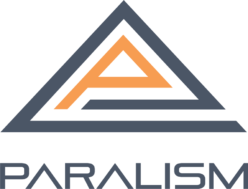On June 4th this year, the modular blockchain base layer Avail raised $43 million in an oversubscribed Series A funding round. This round was led by Founders Fund, Dragonfly, and Cyber Fund. And in February, Founders Fund and Dragonfly had just led Avail’s seed round, raising $27 million. Including the pre-seed round, Avail has secured a total of $75 million in funding. Other investors include SevenX, Figment, Nomad Capital, LocalGlobe, Altos Ventures, Chapter One, Superscrypt, Foresight Ventures, Mirana Ventures, KR1, RW3 Ventures, Alliance DAO, Hashkey, Elixir Capital, Spark Digital Capital, and several angel investors. What is it about Avail that has caught the eye of investors and driven them to compete for the invest?

Avail’s Vision
Avail aims to create a unified Web3 infrastructure, providing a cohesive user experience within a flexible and modular blockchain ecosystem, enhancing blockchain’s scalability, and achieving seamless user interaction in a multi-chain environment. Avail seeks to improve the current system in two main ways:
- Reducing the escalated costs due to the demand for more blockspace caused by limited data availability
- Aggregating the fragmented market and users due to the proliferation of Layer 2 (L2)
So, how will Avail achieve this?
Avail’s Solutions
Avail strives to achieve an uncompromising balance between scalability, interoperability, and security. Its platform comprises a foundational Data Availability (DA) layer, a Nexus interoperability layer, and a Fusion security network layer, forming a unification layer connecting L2 Rollup networks and L1.

Unopinionated Foundational Data Availability (DA) Layer
The DA layer is the base data layer, similar to Celestia’s DA service. The innovation of the Avail DA layer lies in its use of validity proofs and data availability sampling (DAS), allowing anyone to verify DA guarantees within one minute without relying on full nodes. This ensures reliable data availability even under high transaction loads, saving both time and costs and pave the way for broader blockchain interoperability.
Nexus Layer for Interoperability and Sequencer Selection
The Nexus layer is Avail’s interoperable layer, which provides a permissionless framework for inter-rollup messaging. It acts as a coordination component across chains, enabling asset transfers and contract calls between different chains via the Nexus layer. This layer employs zk Rollup technology, including proof aggregation and verification, sequencer selection/slot auction mechanisms. Nexus periodically submits aggregated proofs to Ethereum and the Avail DA layer for verification. A custom module within Avail DA verifies the aggregate proof.
Here is Avail’s ambition, which is to unify the traffic entry port of the frontend. We know, one of the biggest obstacles for Web2 users entering Web3 is the complexity of the Web3 ecosystem, and developers’ biggest frustration is the difficulty of acquiring users in a fragmented ecosystem. If Avail becomes the unified traffic entry port for Web3, it will avoid the competition for existing users and attract attention to a broader user base, addressing one of the most urgent needs in the blockchain industry.
Fusion Security Layer
Fusion introduces a multi-asset staking POS consensus, allowing non-native tokens to be combined with Avail native tokens to jointly secure the Avail platform. Fusion will support established cryptocurrencies like BTC, ETH, SOL, and emgeringRollup tokens issued on Avail. This provides direct application scenarios for Avail and other tokens on the chain, reducing the security risks of single-asset staking. Ideally, Avail will attract and lock liquidity from other chains into the Avail ecosystem. Rollups created using Avail will also share the security provided by Avail Fusion, building the Avail ecosystem together.
Conclusion
The success of the Celestia project highlighted the potential of modular blockchains to promote Web3 integration. Currently, there are multiple options for the DA layer, such as Celestia, EigenDA, and Arbitrum Anytrust, but no other project combines the interoperability and security layers like Avail. Avail poses a significant threat to DA projects and Ethereum, which has the most Rollups. However, Avail’s cross-chain interactions still rely on Ethereum for final settlement and arbitration, making Ethereum its only settlement anchor for now. This means Avail will be in a love-hate relationship with Ethereum for a considerable period, sharing and competing for traffic and Rollup projects. Ethereum will likely continue to enhance its DA, interoperability, and settlement layers, and maybe in this way, Avail also achieve its goal of promoting Web3 integration.
Nevertheless, Avail has a long way to go. The DA layer is currently in the testing phase, and Nexus and Fusion are still conceptual. There are many technical challenges to overcome, such as data layer security issues, the complexity of bridging, and the capacity limitations of Ethereum for final settlement. We will continue to follow Avail’s progress and share updates with you all.
For more information, please refer to the Avail official website: https://www.availproject.org/

